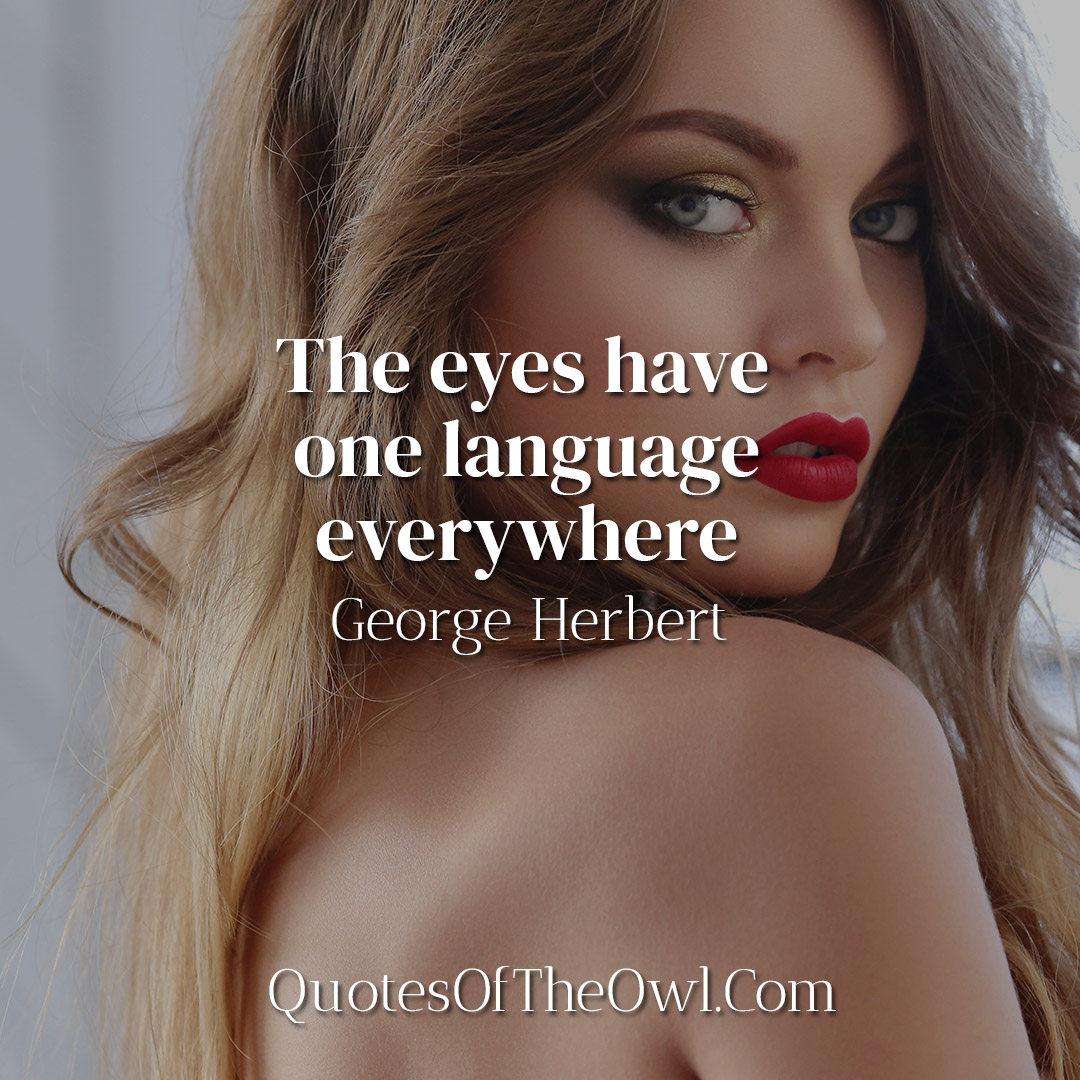What is the Meaning of George Herbert’s Quote: “The eyes have one language everywhere”?
In the realm of literature, quotes often hold profound wisdom and convey timeless truths about the human experience. One such intriguing quote is by George Herbert, a renowned poet and priest, who said, “The eyes have one language everywhere.” In this article, we will delve into the meaning behind this thought-provoking statement and explore how it reflects the universality of human expression and the power of non-verbal communication.
Context and Background of the Quote
George Herbert was a 17th-century poet, orator, and Anglican priest. His works are known for their spiritual depth and insightful observations about life and humanity. The quote, “The eyes have one language everywhere,” can be found in his collection of poems titled “The Temple,” published posthumously in 1633.
Analyzing the Quote’s Literal Meaning
At first glance, the quote suggests that the eyes possess a universal language understood by everyone. It implies that non-verbal communication, conveyed through eye contact and expressions, transcends linguistic and cultural barriers.
The human face is a canvas of emotions, and the eyes, in particular, are a window to one’s feelings. Whether through joy, sorrow, love, or anger, our eyes can convey emotions that are universally recognizable.
Exploring the Deeper Meaning
Beyond the literal interpretation, Herbert’s quote carries metaphorical implications. It points towards the common thread that connects humanity, emphasizing that despite our diverse backgrounds and languages, we share fundamental emotions and experiences.
In a world divided by language barriers, political borders, and cultural differences, this quote reminds us that we are all part of the same human family. Despite the diversity of languages spoken, our emotions remain remarkably similar.
The Universality of Human Expression
Language barriers can be overcome through non-verbal communication. Even when people cannot understand each other’s spoken words, they can often interpret emotions and intentions through facial expressions, body language, and eye contact.
Researchers have found that certain emotions, like happiness, sadness, fear, and surprise, are expressed similarly across cultures. This universality of human expression allows individuals to connect on a deeper level, fostering empathy and understanding.
Interpreting the Quote in Different Cultural Contexts
While the quote suggests a universal understanding, its interpretation may vary across different cultural contexts. Some cultures may emphasize direct eye contact as a sign of respect, while others may consider it impolite or invasive.
Similarly, expressions and gestures may carry distinct meanings in various societies. It is essential to be sensitive to these cultural nuances to avoid misunderstandings and misinterpretations.
The Power of Visual Communication
George Herbert’s quote underscores the significance of visual communication in human interactions. Visual storytelling, whether through art, photography, or film, has the power to transcend language barriers and evoke emotions that resonate universally.
In a world where information is increasingly conveyed through images and videos, the eyes become the gateway to shared experiences and understanding.
Conclusion
George Herbert’s quote, “The eyes have one language everywhere,” holds timeless wisdom that speaks to the universality of human expression. It reminds us that beyond our diverse languages and cultures, we share common emotions and experiences.
Discover timeless wisdom and inspiration through George Herbert’s profound quotes – Explore now!

